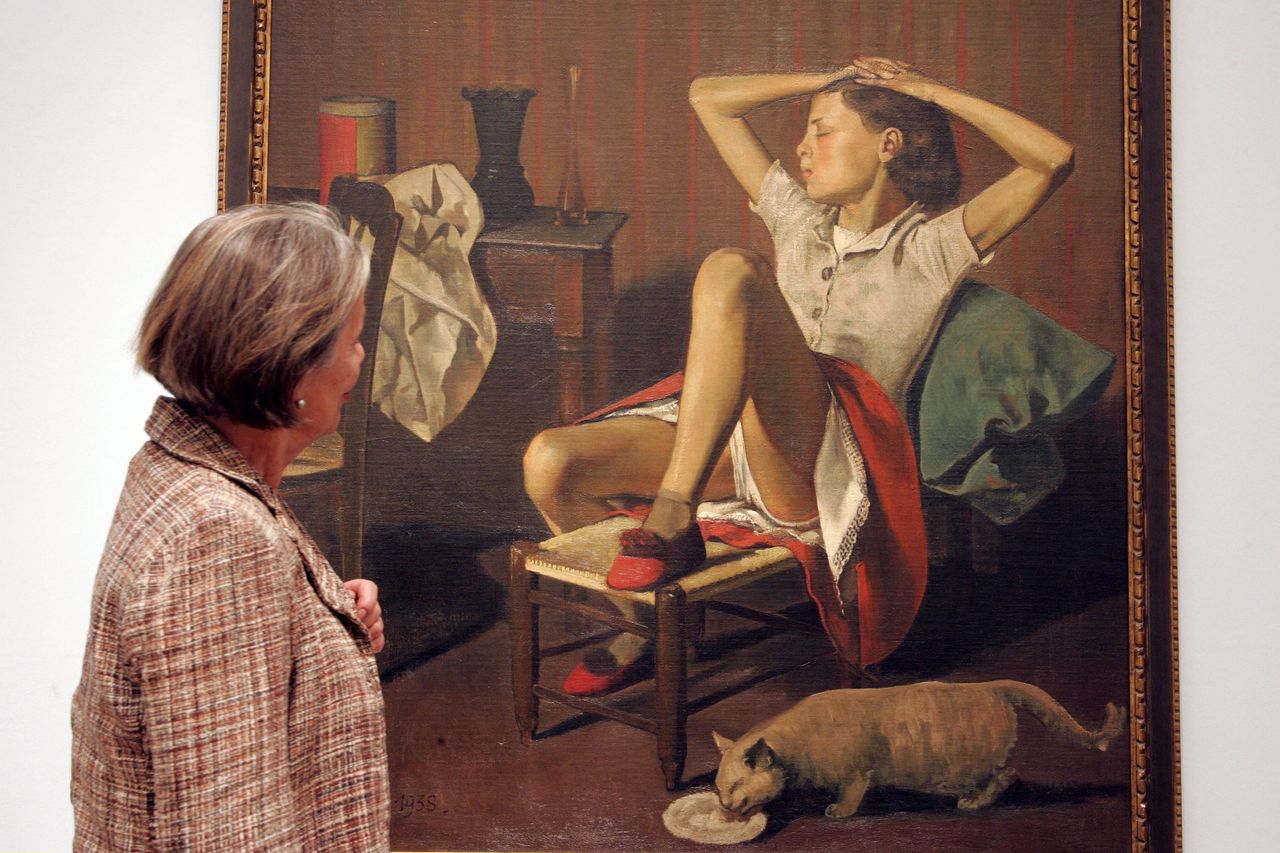Hanging on a wall at the Metropolitan Museum of Art is a painting of a pubescent girl. She’s leaning back in a wicker chair, eyes closed, arms clasped above her head. Her knees are splayed open and her red skirt is flipped up to reveal a pair of white underwear. The 20th-century work by the French artist Balthus depicts the artist’s neighbor, Thérèse Blanchard, according to the Met’s description. She modeled for a total of 11 Balthus paintings between 1936 and 1939, starting when she was 11 years old.
On Nov. 30, a New Yorker named Mia Merrill penned a petition on Care2 demanding the museum either remove “Thérèse Dreaming” from view or amend the wall text to acknowledge the potentially disturbing nature of the work. “Given the current climate around sexual assault and allegations that become more public each day,” she wrote in her petition, “in showcasing this work for the masses without providing any type of clarification, The Met is, perhaps unintentionally, supporting voyeurism and the objectification of children.”
The petition garnered more than 11,000 signatures over the last two weeks, almost reaching its goal of 12,000. Yet Merrill’s appeal was met with derision from some members of the art world, who described the petition as a “witch hunt.”
One vocal opponent was New York magazine art critic Jerry Saltz. “Um if you take [‘Thérèse Dreaming’] out,” he wrote on Instagram, “you pretty much have to remove ALL art from wings of India, Africa, Asia, Oceania, Greece, Rome, Renaissance, Rococo, and Impressionism, German Expressionism, Klimnt, Munch, and all Picasso & Matisse.” He topped off the sentiment with the hashtag #ArtWorldTaliban.
Condescension aside, Saltz has a point. Any widespread effort to expunge this kind of imagery from the annals of art history would result in more than a few empty picture frames in major museums around the world. The nude has been a staple of European oil painting since 16th-century depictions of Adam and Eve. Within this genre, as critic John Berger wrote, “women were the principal, ever-recurring subject.”
The fact that women often appear unclothed in paintings is not, in itself, cause for alarm. The problem is the imbalance of power behind many of those paintings, a dynamic that positions woman as the eternal object of beauty and man as the genius creator and authority of it. As Berger said: “This nakedness is not... an expression of her own feelings; it is a sign of her submission to the owner’s feelings or demands. (The owner of both woman and painting.)”

Our recent cultural reckoning, prompted by long-simmering reports of rampant sexual misconduct in various industries, has indeed cast a shadow over the art world. It’s prompted some to question the circumstances that allow powerful men to engage in predatory behavior, and it’s prompted others to address how past predatory behavior has been glorified by keepers of history. Some have wondered, in particular, whether museums have a responsibility to change the way they present work that sexualizes or objectifies women ― especially vulnerable populations like minors and sex workers. What should become of images made under murky conditions, when a female subject’s dignity, agency and safety were potentially at risk?
These are some of the issues raised in Merrill’s petition. “At the end of the day, we’re talking about an artist who asked very young girls to come to his studio and take their clothes off,” Merrill told The New York Times in an interview. “What does that do to the question of consent?”
In response to Merrill’s petition, the Met announced in a statement, published on Artnet on Dec. 5, that it will not remove the Balthus piece.
“Moments such as this provide an opportunity for conversation,” a spokesperson for the museum wrote, “and visual art is one of the most significant means we have for reflecting on both the past and the present, and encouraging the continuing evolution of existing culture through informed discussion and respect for creative expression.”
The National Coalition Against Censorship applauded the Met’s decision. “Attacking art is counterproductive to the open discussion necessary for us to confront the realities of sexual harassment and abuse,” a spokesperson for NCAC told HuffPost. “The protesters’ claim that displaying the painting implies institutional approval of an unhealthy sexualization of young women also fundamentally misconstrues the role of cultural institutions, which is to facilitate a diverse public’s engagement with a rich array of cultures and objects by framing and contextualizing them.”
The Met’s statement also made clear that the museum will not amend the wall text that accompanies the painting ― the white placard’s worth of description that gives museumgoers basic information about an artwork and its maker.
“The Met’s response was disappointing but not surprising,” Margaret Middleton, who works as a designer and developer ushering social justice initiatives into museum spaces, told HuffPost. “Their statement did not address Merrill’s request that the painting be given more context. Museums like to think of themselves as objectively presenting artwork, but there is no such thing as a neutral museum.”
“I’d like to see museums take more responsibility for the way they exhibit and interpret artworks,” she added. “Every artwork on the wall, every label, represents a decision that someone made.”
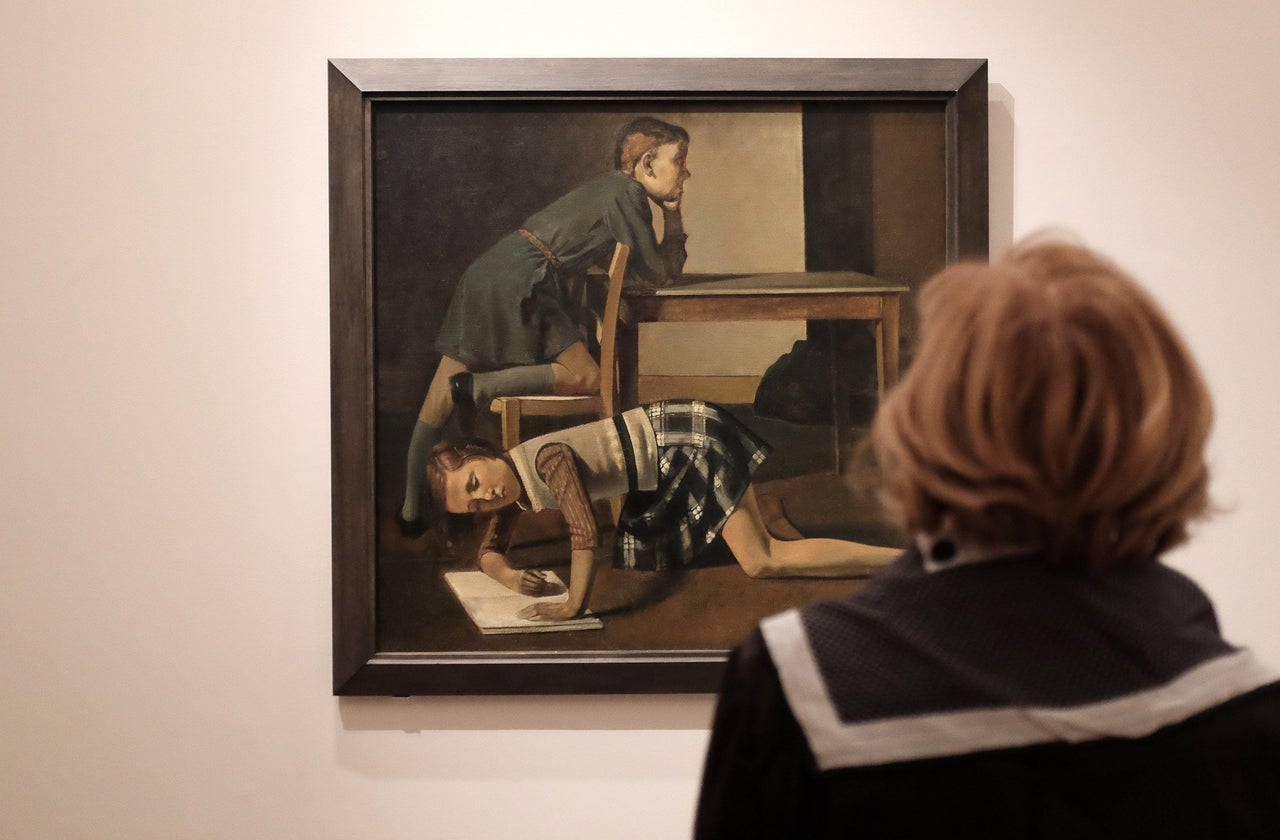
Feminist artists, historians and critics have been actively challenging Western art history’s dominant (read: male) narrative for decades. The #MeToo movement has only amplified their message.
“Western art is often very exploitative,” Gretchen Jennings, a museum editor who previously worked at the National Museum of African Art and the Smithsonian Museum of American History, said. “It revolves around the primacy of the male artist. He is the one that chooses, he is the one that profits... Art is a much more risky proposition for the woman than the man.”
Jennings explained that iconic art historical subjects like Victorine Meurent, otherwise known as Edouard Manet’s “Olympia,” were treated as “fallen women” during their times. Because Manet painted Meurent, an artist herself, as defiantly nude, she became the subject of public outcry and moral condemnation from people who assumed she was a sex worker. And if women artists were scrutinized as wanton objects for appearing nude in paintings, sex workers were treated with even more animosity and disdain.
A prime example is Picasso’s “Les Demoiselles d’Avignon,” one of the most well-known artworks of all time. Made in 1907, the painting depicts five anonymous sex workers whom Picasso encountered on Avignon Street in Barcelona, Spain, their flesh fragmented and their faces rendered in the style of African masks. In 1973, historian Robert Rosenblum described the painting as an “explosion” triggered by “five nudes [who] force their eroticized flesh upon us with a primal attack.” Rosenblum writes of the female subjects as though they were responsible for the way Picasso painted them. Of course, this is probably not so. And while Picasso profited immensely off his image, the demoiselles remain nameless in history books.
Today, we have an idea of how Picasso treated his female subjects. His granddaughter wrote that “he submitted [women] to his animal sexuality, tamed them, bewitched them, ingested them, and crushed them onto his canvas. After he had spent many nights extracting their essence, once they were bled dry, he would dispose of them.”
A New York-based museum educator who prefers to remain anonymous for fear of professional retribution described how difficult it is for her to teach Picasso’s work without acknowledging the gendered power imbalances and misogynistic stereotypes involved. As an educator, she’s tasked with turning museum spaces into dynamic, relevant and engrossing educational experiences ― something more than a quiet maze of inscrutable artworks by dead white men ― through guided tours, creative exercises and challenging dialogue. If Picasso were alive now, perhaps his oeuvre ― or, at least, the way educators describe and teach it ― would be reconsidered in light of his toxic behavior. But as it stands, Picasso’s work is featured prominently in collections at the Met, the Guggenheim and the Museum of Modern Art, often with little mention of his behavior.
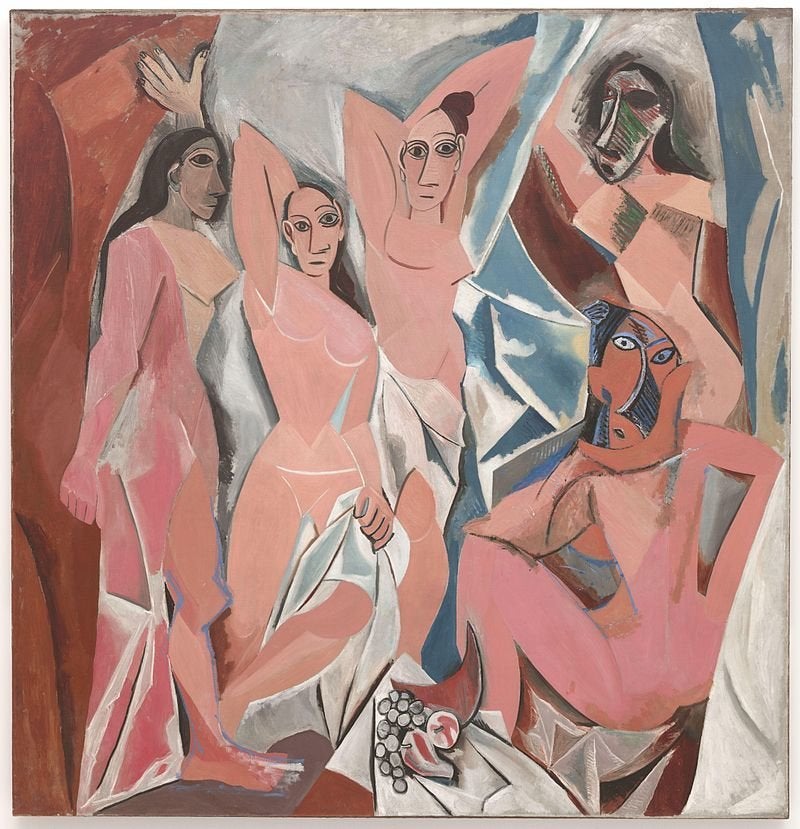
To be clear, none of the museum educators who spoke with HuffPost believe Picasso’s paintings ― or works like them ― should be censored or removed from museums that already house them.
In fact, most critics, including the aforementioned educator, believe that rather than limiting the art available to patrons, museums should expand their collections in order to address their audiences’ concerns. “Museums are living, breathing organisms,” she said. “We need to make space for other voices, whether historical or contemporary. We need other perspectives besides a white male perspective, besides a misogynist perspective. How many voices do we need that keep reinforcing misogyny?”
Many people, like Shelly Bahl, an artist, curator and educator who worked at the Art Gallery of Ontario, are less interested in dictating whether a work like “Thérèse Dreaming” is displayed, and more interested in addressing the way it is discussed and taught — especially to the next generation of young women.
“You always have to contextualize a work of art within its social and political contexts,” Bahl told HuffPost. “Oftentimes issues like race, gender and power dynamics are put aside. People say, let’s just look at the work. But we cannot do that.”
Bahl was hired by the AGO through a grant bringing culturally diverse curators to mainstream institutions. In 2000, she invited South Asian artist Neena Arora to create a “site-specific intervention” in the gallery’s “Group of Seven” space, featuring the work of seven Canadian landscape painters influenced by nature and aboriginal culture. In Arora’s performance, titled “Shapeshifter,” she walked, sat and spun throughout the gallery, acting out, as she called it, “a walk through history,” imploring viewers to reexamine the artworks on view in the context of appropriation and exoticism.
“I am of mixed race and within my own identity a dichotomy exists like the relationship with the dominant voice of the Western art world and the voice of the ‘other,’” Arora explained. “The [AGO’s] collection at the time was placed historically, and although some truly beautiful works existed in the space, there was always a distanced and stodgy feel of the space and placement.”
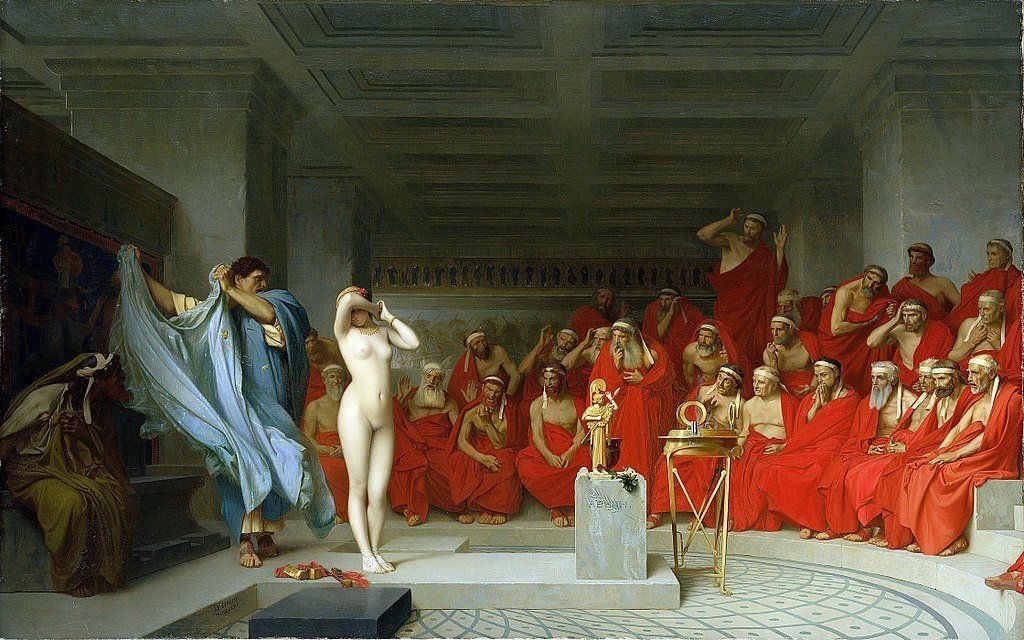
Individual projects like Arora’s are one way museums can reevaluate their collections. But when it comes to broader institutional change, Bahl believes text is key. “Didactic materials are as much a part of the art viewing experience as the physical work of art,” she said. “Let’s acknowledge what is in these works, beyond the fact that they’re, for example, in a neoclassical style.”
Ronna Tulgan Ostheimer, director of education at the Clark museum in Williamstown, Massachusetts, also stressed the importance of changing context, not content.
“Art is material evidence of the human experience,” Ostheimer said. “We shouldn’t assume that art history is valuable in and of itself. Instead it helps us understand our modern perceptions, how they’ve changed, where our struggles were born from. It sparks important dialogues and difficult discussions.”
Ostheimer pointed to 19th-century paintings by artists like Jean-Léon Gérôme and Eugène Delacroix. Today their work could be described as “Orientalist,” a term coined by theorist Edward Said to describe art depicting Eastern cultures from the perspective of the Western imagination. Often, their paintings portrayed Eastern cultures as inferior, exotic, strange and primitive.
Over the past 40 years, the conversation around such paintings has shifted. Today, a discussion of Gérôme’s work in a museum or classroom setting would almost certainly address the flawed suppositions at its root. “Before Said, a lot of those academic works were simply thought of as fine paintings,” Ostheimer said. “Now, they are discussed as representations of ‘the other.’”
Ostheimer believes a similar shift is overdue in the way we discuss paintings of nude women. “To me, that’s a much more valuable choice than putting something out of someone’s eyes,” she said.
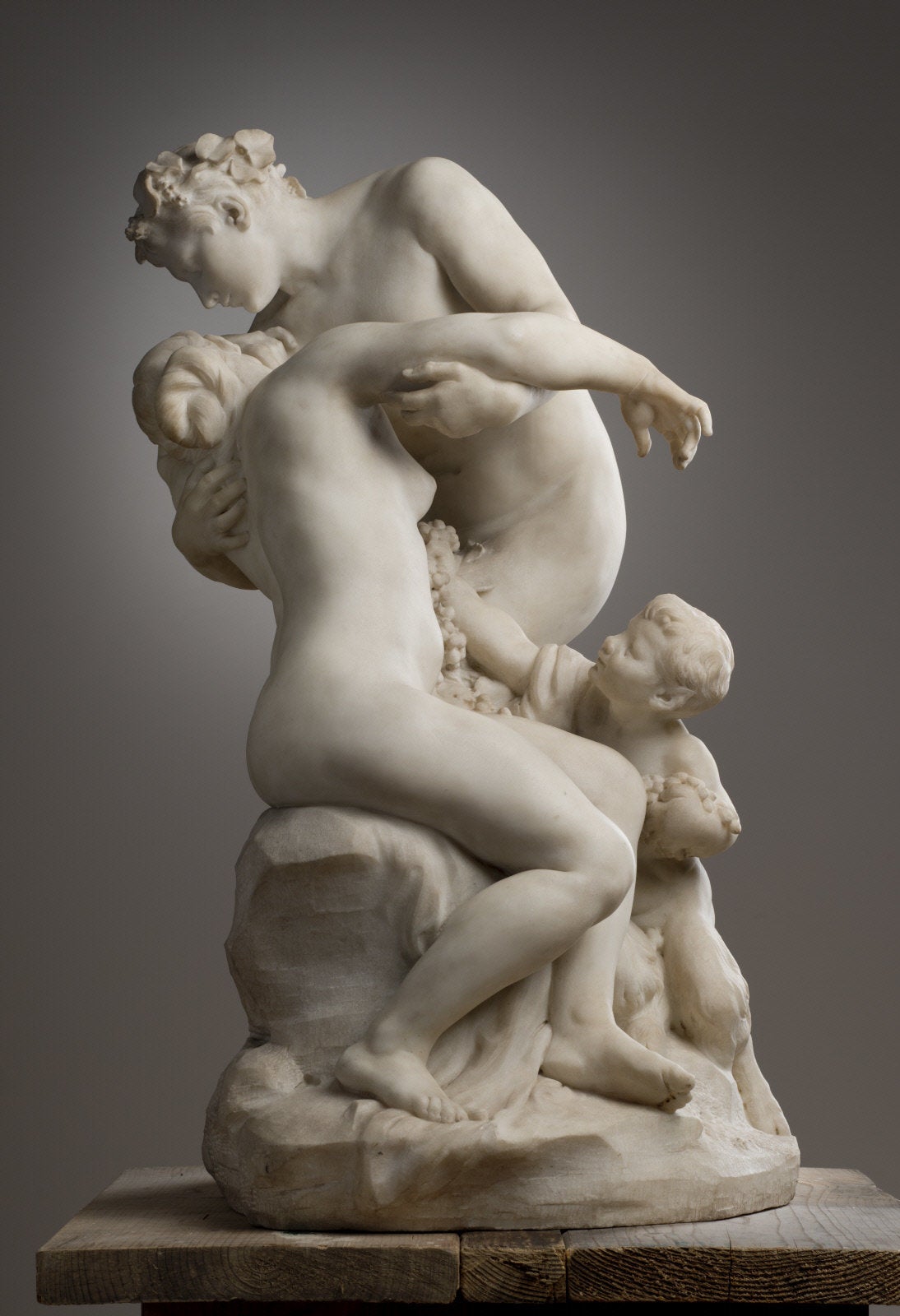
Ostheimer began advocating for such a shift long before the recent deluge of stories about nonconsensual dynamics between powerful men and less powerful women. In 2016 she helped coordinate “Romance and Rape Culture in the Clark Collection,” a tour led by former Williams students Molly Burroughs and Alex Mendez that explored the museum’s holdings through the lens of consent.
In particular, Ostheimer recalled an 1894 sculpture featured in the tour ― Jules Dalou’s “Bacchus and Ariadne.” The marble figure, based on the Greek myth, shows Bacchus, the god of wine, waking up the sleeping princess Ariadne by kissing her. In the sculpture, Ariadne’s body hangs limp as Bacchus props up her face, as if searching for her mouth.
“Is it ever OK for a man to be kissing a sleeping woman without her consent?” Ostheimer asked. “I asked the students, faculty and staff: ‘I’m curious, do you think it’s ever OK to talk about this sculpture without bringing up that what is happening feeds into stereotypes and assumptions that this behavior is permissible?’ They thought once you have an awareness that an artwork perpetuates dangerous ideas, how can you possibly talk about it without bringing up the problem?”
And yet Ostheimer believes there is great value in works like Dalou’s, in their ability to capture the way people thought at a particular place and time. She simultaneously believes it is the job of a museum staff to instruct visitors in a way that doesn’t ignore current events and ideas.
“Being able to talk about your collection and how it connects to contemporary issues helps a collection stay relevant to more people than to whom knowledge of art history is valuable,” she said. “To me, if we hide everything and pretend these issues didn’t exist, we aren’t going to learn and grow and change.”
